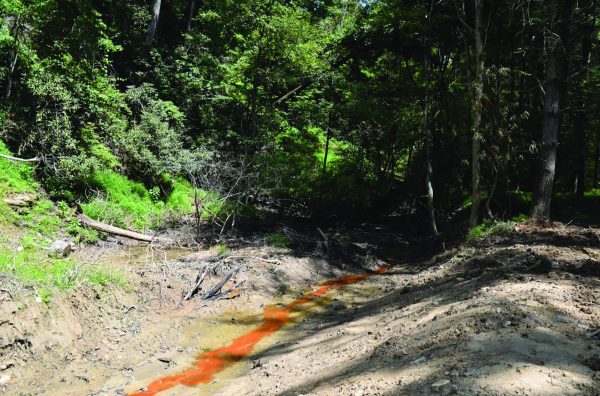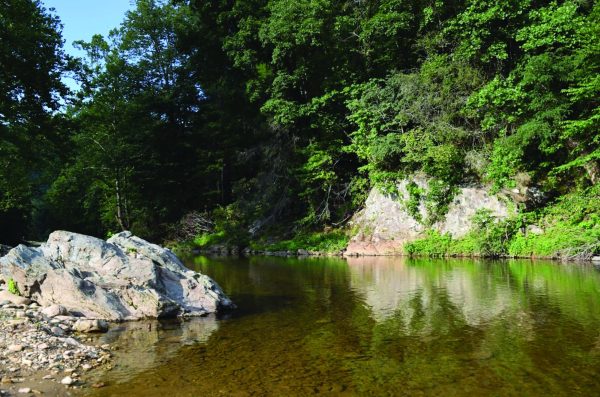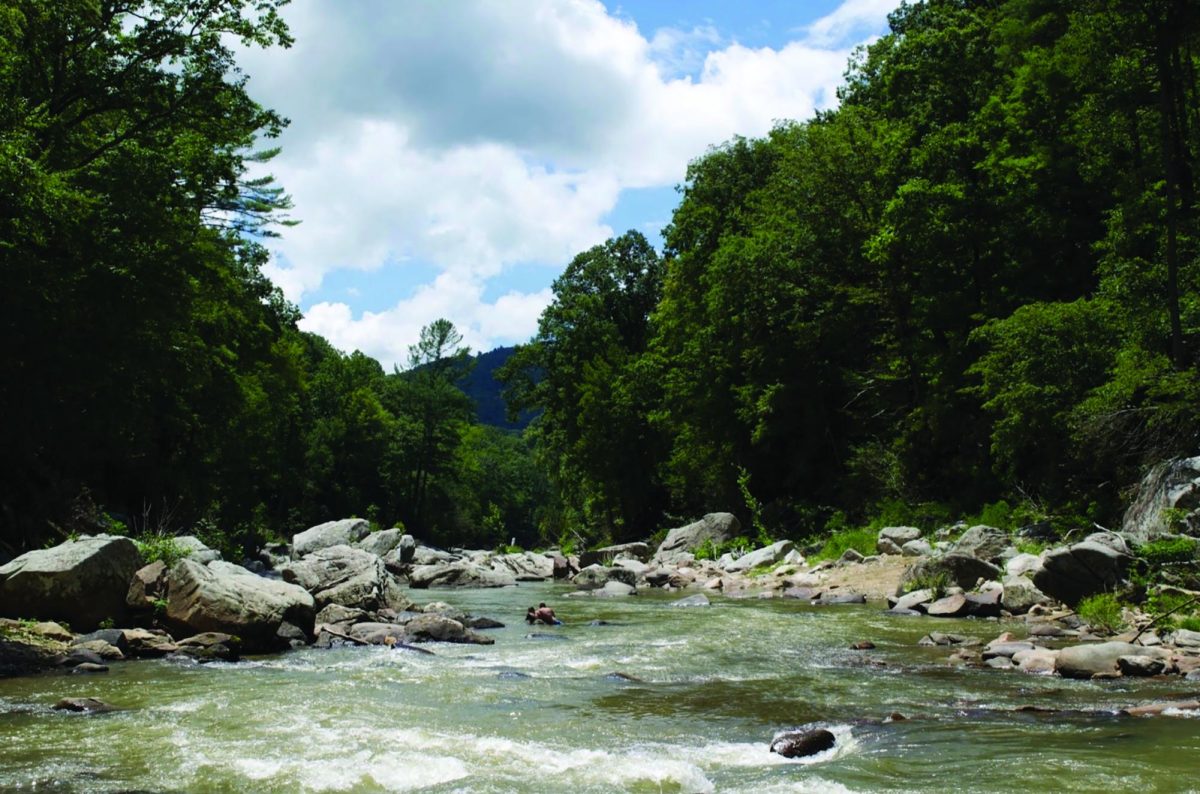Hurricane Helene hit Western North Carolina Sept. 27 with three days of heavy rain, permanently altering the infrastructure and geography of the area. According to the North Carolina State Climate Office, Watauga County received 16.67 inches of rain from September 25-27, totaling 11 inches more than the county typically receives during the entire month of September.
This record flooding altered the geography of Boone’s waterways, many of which are still recovering nearly one year later. Locations along the Watauga River, such as Guy Ford River Access and Laurel Creek Falls, popularly known as Trash Can Falls to locals, have been permanently changed by the storm.
Andy Hill is the High Country regional director and Watauga riverkeeper at MountainTrue. As riverkeeper, he oversees the watershed, which includes everything from collecting data on water quality to educating people about the rivers.
“The greatest impacts from the storm have been from impacts to infrastructure like damage to septic and wastewater treatment plants that are causing ongoing water quality
impacts,” Hill wrote in an email. “There is still a significant amount of storm related debris and trash in our waterways and on the banks.”
Post Helene, Hill has conducted reports on the quality of water systems in Boone, including the South Fork New River and the Watauga River. These tests include information on levels of sedimentation pollution that evaluate the safety of the water. Each week, Hill updates this information in the Swim Guides, which can be accessed through the MountainTrue website and the riverkeeper’s Instagram.
“There are numerous systems discharging poorly treated or untreated waste into our waterways,” Hill wrote. “That is why Swim Guide is such an important program.”

South Fork New River is one of the major rivers in Boone. It flows around the whole town, all the way from the Ted Mackorell Soccer Complex to the Boone Greenway.
Six months after the storm, graduate student and political science and data analytics double major Luke Barber was enjoying a walk along the Greenway when something caught his eye. Looking down, he saw that trash overwhelmed the river, swamping along the riverbanks and into the water. In response, he and some classmates started Clean Waterways of the High Country through Advanced Environmental Politics, a class held by Professor Tatyana Ruseva.
“There were all these different places around the area that really could have used some volunteers and some extra hands to clean up and restore the rivers to what they were before the storm,” Barber said. “I know a lot of folks in this area take a lot of pride in the natural environment and obviously that’s why so many people come here to go to school.”
During the summer and fall, tourists travel from all over to see the natural beauties of the area in full bloom.
“I think it’s very important and our responsibility as people to take care of our natural areas,” Barber said. “With Hurricane Helene specifically, the amount of devastation it caused and the amount of debris and pollution it deposited into areas that were once, you know, pretty presentably taken care of, was very disheartening.”
New River Conservancy is a nonprofit organization that shares a similar mindset. Andrew Downs, executive director and App State alum, said he was wary to start cleaning the rivers due to the displacement the community was going through immediately following the impact of the storm. But many in the community felt ready to take action right away.
“What we learned really quickly was that people viewed the river itself as a member of their community,” Downs said.
So after one month, they decided to start cleaning the rivers.
“We’ve had as many cleanups in 2025 as we had in all of 2024 already,” Downs said. “And we’re just halfway through the year.”
Despite the devastation of Helene, the river systems have made a successful turn around since the storm.
“What we’ve seen is that the river, because it is so rural and wild and undeveloped in a lot of places, rebounded really quickly,” Downs said.
At MountainTrue, Jon Stamper leads as the river clean-up coordinator. With the help of full time staff and dedicated volunteers, Downs said the organization has picked up about 2.8 million pounds of trash out of the waterways.
“Over 500,000 pounds of that has been hand picked,” Stamper said.

During the last 10 months of cleaning the trash, there were several items they chose to keep. While most of the trash is taken from the water and thrown away, items such as photo albums are set aside. Mandy Wallace is a staff member in charge of seeking out the homes of these items.
“We find so much stuff,” Stamper said. “It’s people’s lives. Nobody meant for that trash to end up in the river. It was taken away from them.”
Hurricane Helene is an example of the effects that climate change has had and will continue to have on the modern world. According to the National Oceanic and Atmospheric Administration, the rainfall from the storm increased due to climate change.
“Climate change and development are impacting the Watauga and New Rivers at a rapid pace,” Hill wrote. “Thoughtful and intentional actions taken now will help us build resiliency for the next storm.”
Recovery from a storm as large as Helene will be a long road. As a community, there are steps to be taken to help ease the process.
“Rivers are resilient,” Hill wrote. “We expect they will recover if we do our part to monitor water quality, reduce harmful discharges and erosion and plant native species along the banks.”

